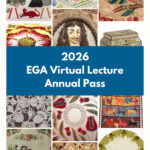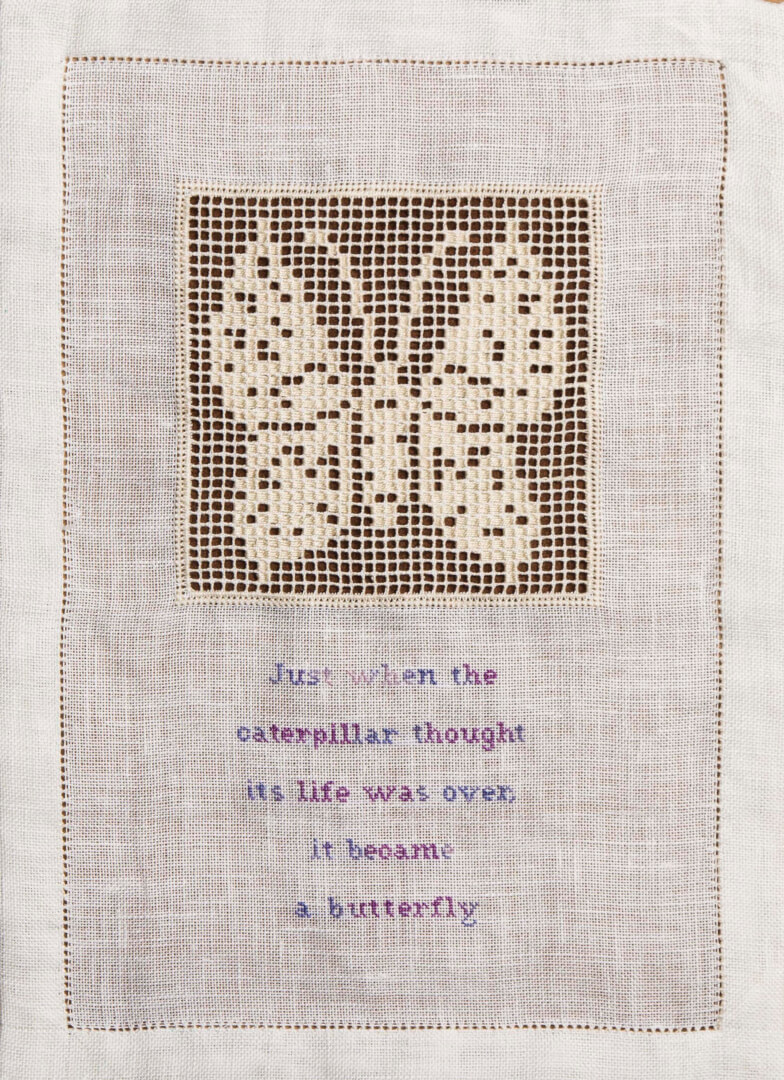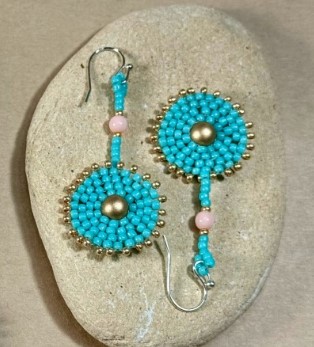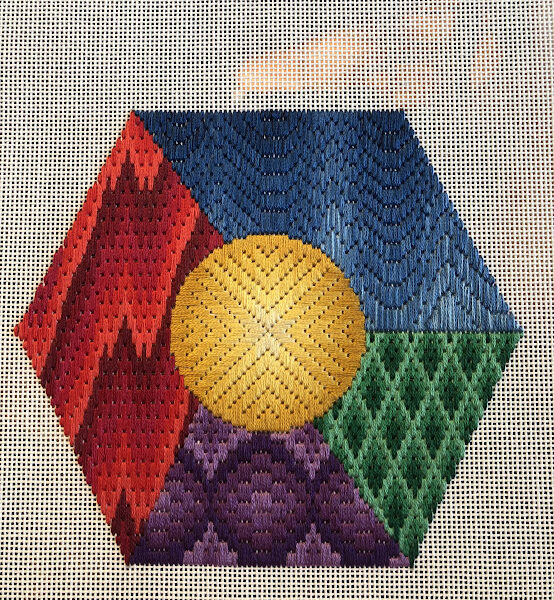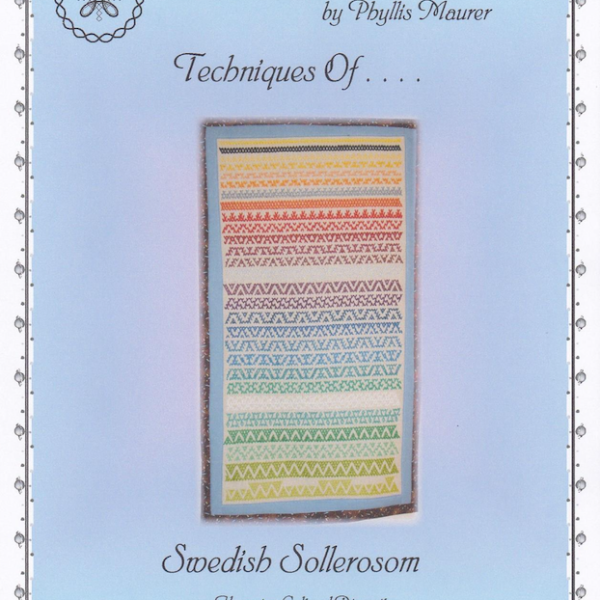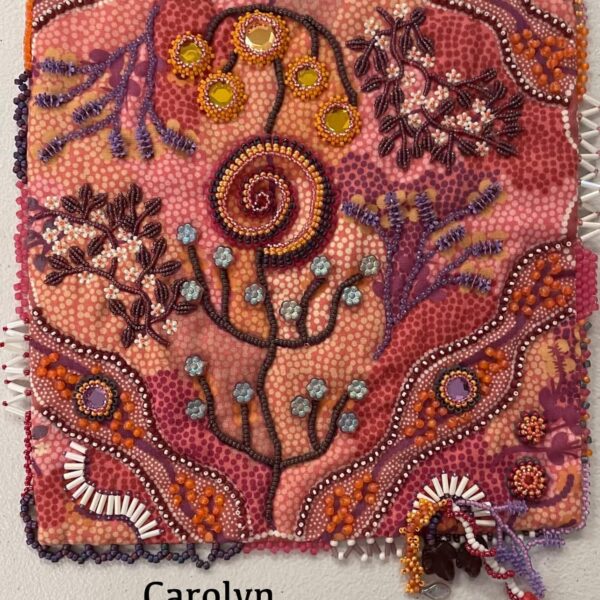Technique: Blackwork embroidery
Place of Origin: England
Earliest known date: 15th century
History: It is difficult to pinpoint the exact origin of Blackwork embroidery, as elements of the style have been practiced in several different cultures throughout recorded history. Similar counted-thread techniques were practiced in Moorish Spain, Slavic countries across eastern Europe, and Islamic countries going back centuries.
However, Blackwork embroidery as we know it today arose in the 15th and 16th centuries in England. An apocryphal story credits King Henry the VIII’s first wife, the Spanish Queen Catherine of Aragon, with introducing Blackwork to Tudor England—hence Blackwork’s other name, “Spanish Blackwork.” But even this story is likely a myth, as Chaucer’s Canterbury Tales—published in 1387—mentions Blackwork embroidery: “Of white, too, was the dainty smock she wore, embroidered at the collar all about with coal-black silk, alike within and out.”

In Tudor England, Blackwork motifs were frequently stitched onto household items and garments; note the band of blackwork embroidery decorating the neckline in the portrait of Catherine of Aragon above. At that time, Blackwork was only stitched by and for the aristocracy. In 1553, an Act of Parliament forbade anyone below the rank of Knight to wear ‘pinched’ (pleated) shirts or ‘plain shirtes garnished with silk gold or silver.’
Blackwork was especially popular around collars and cuffs, as the most prominent stitch—the double running stitch—was reversible, and could be seen from both sides on those areas when worn.

Materials: Blackwork embroidery is traditionally stitched using black silk thread on a white or off-white evenweave linen or cotton fabric. While silk was the original thread of choice in Tudor times, modern stitchers often use stranded cotton, perle cotton, or even specialty threads like metallics or hand-dyed fibers for variation and texture.
Evenweave fabric is essential to maintaining the precision of the geometric or counted patterns that Blackwork showcases. Popular fabric counts include 28-count or 32-count linen, which allows for fine detail.
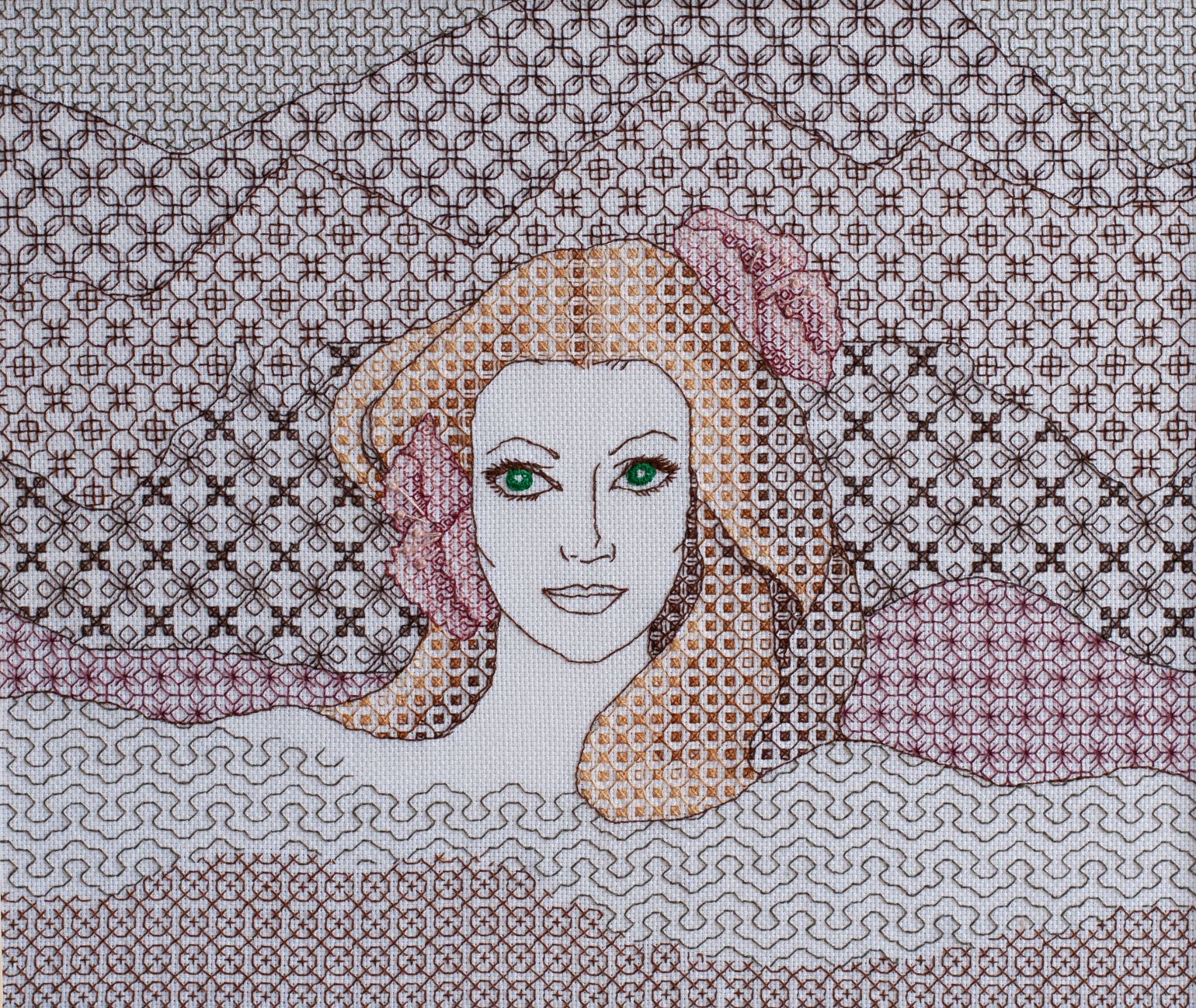
Techniques and Stitches: Blackwork is a kind of counted-thread embroidery. The foundational stitch in Blackwork is the backstitch, which is used to outline shapes and construct the underlying structure of the design.

Copyright Thyssen-Bornemisza Museum, Madrid, acc. no. 191 (1934.39).
However, one of the most defining characteristics of Blackwork is the use of double running stitch, also called the Holbein stitch, named for Hans Holbein the Younger, famed portrait painter for Henry the VIII and the official Court Painter. Holbein’s paintings often featured his subjects wearing Blackwork embroidered collars, cuffs, and hems. His technique in rendering embroidery stitches was so fine that his paintings have become reference points for recreating certain Blackwork designs. As mentioned, Holbein stitch creates a reversible line, making it ideal for garments and linens where both sides may be visible. (In Canterbury Tales, we can assume Chaucer was referring to Holbein stitch when he wrote the collar was embroidered “alike within and out.”)
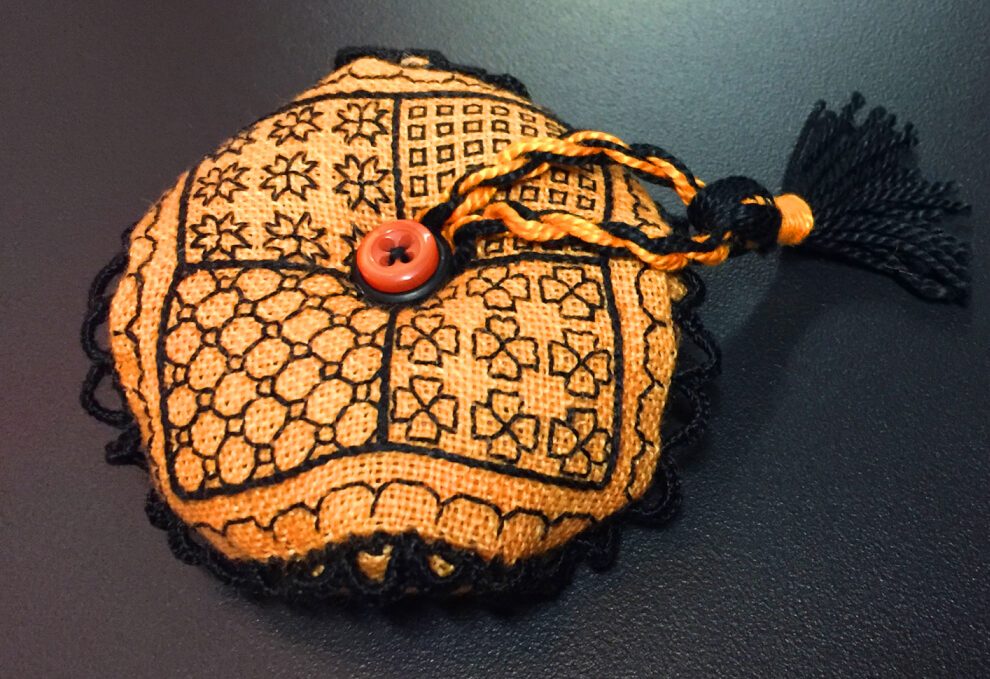
A common technique in Blackwork embroidery is to stitch an outline first using backstitch or Holbein stitch, and then fill it in with repeated geometric or floral patterns called “fill patterns.” Other stitches may occasionally be used for decorative effects, such as seed stitch or cross stitch for filling areas.
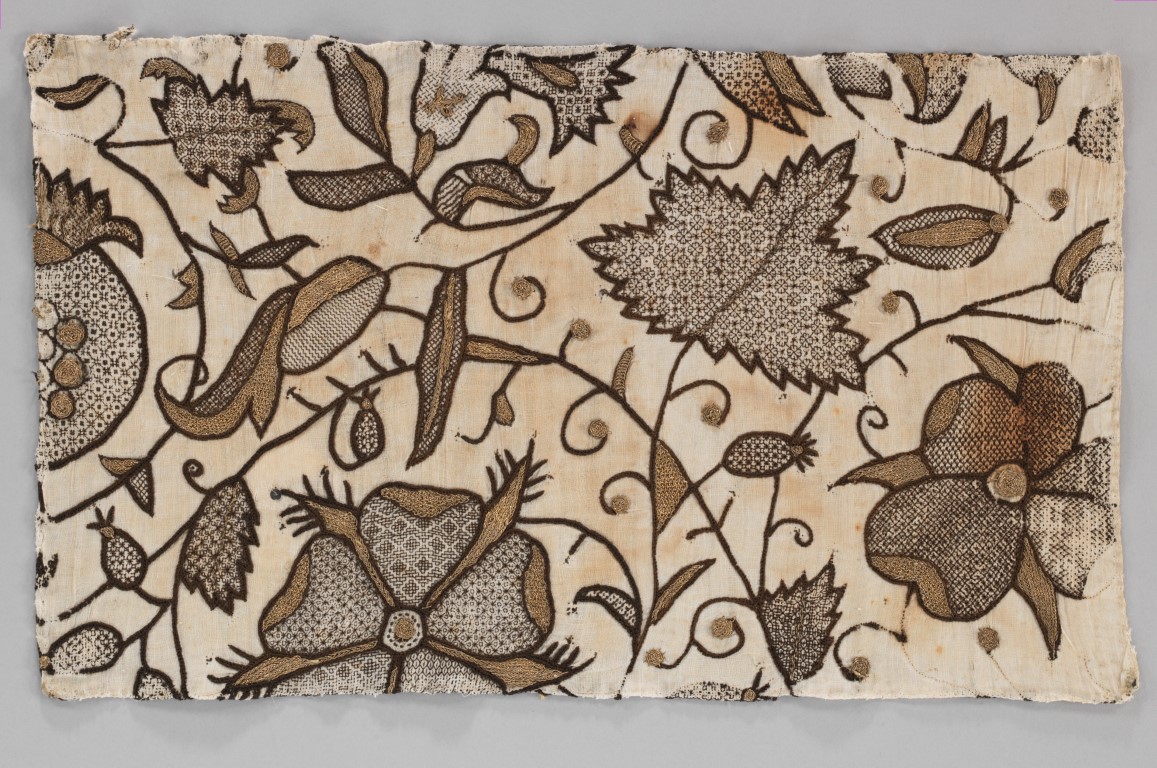
Linen embroidered with silk and gilded silver precious metal-wrapped threads. Metropolitan Musem of Art, acc. no. 2013.598.
Modern Blackwork may incorporate shading techniques by altering stitch density or layering patterns to create light and dark areas. Some contemporary Blackwork pieces look almost like a stitched form of ink drawing. The combination of outline and fill stitches allows for incredible versatility, from stark, minimal motifs to highly detailed, shaded portraits. Different thread thicknesses may be used to achieve more dimension and complex shading.
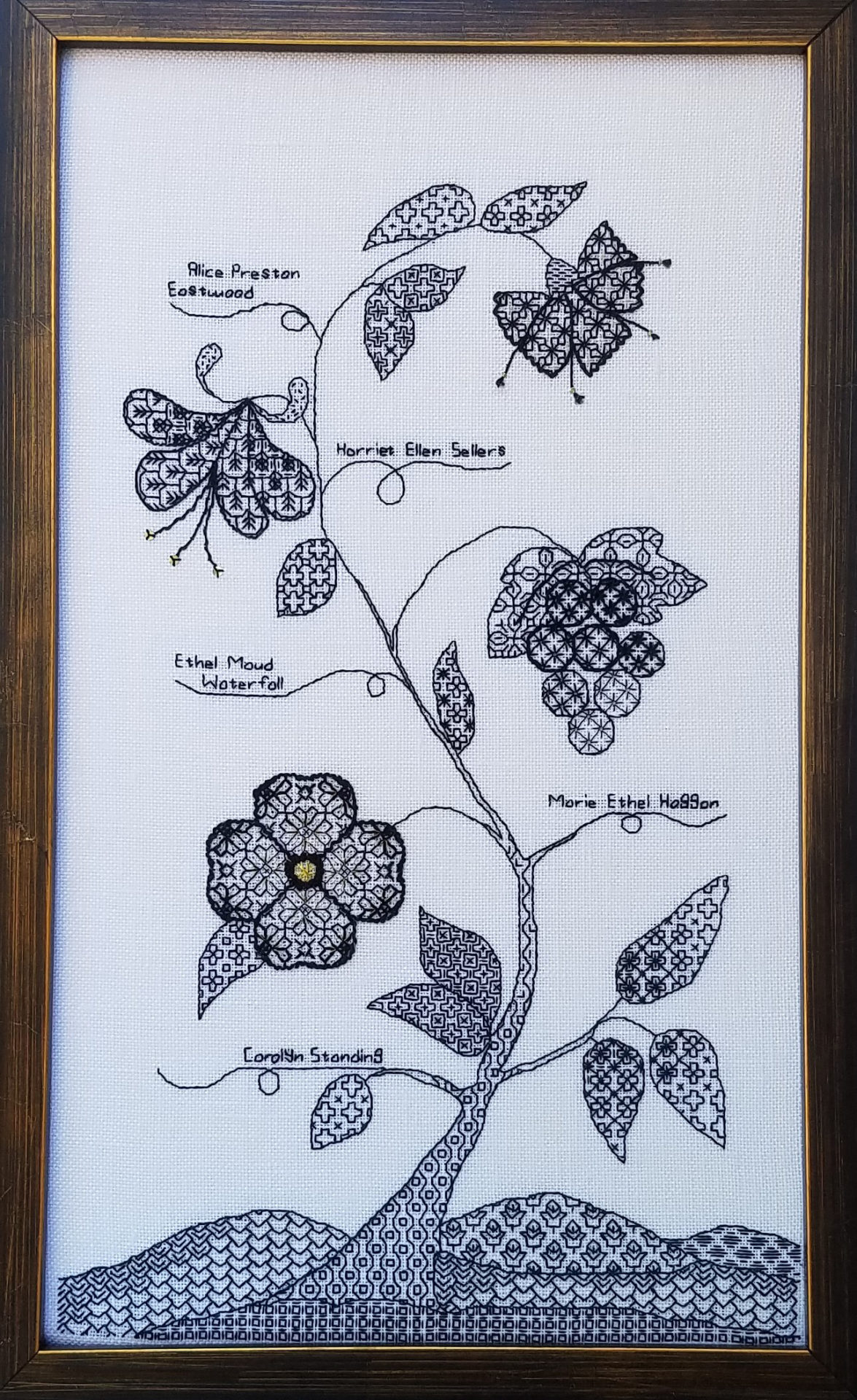
Motifs: Motifs in Blackwork are typically geometric, floral, or botanical. Tudor-era pieces favored repeating lattice patterns and scrolling vines, with examples from the reign of Elizabeth I introducing more pictorial representations such as birds, insects, and stylized animals.

Some patterns resemble lace or tapestry, while others look more like ink illustrations. During the Elizabethan period, floral and botanical motifs communicated different meanings: pomegranates were used for chastity, pears for abundance, daisies for innocence, oak for loyalty and dependability, and roses for love.
Interested in learning more about Blackwork embroidery? Consider EGA’s Master Craftsman program in Counted Thread, the Group Correspondence Course Ancestree with Carolyn Standing-Webb, Petite Projects like the Blackwork Bookmark, Blackwork Butterfly, and Blackwork Hearts, and Free Embroidery Projects like Halloween Blackwork Biscornu and Blackwork Honeycomb Needlebook. We also recommend reading our interviews with some of our favorite Blackwork embroidery teachers and designers Marion Scoular, Sarah de Roussett-Hall, and Dr. Valentina Grubb.
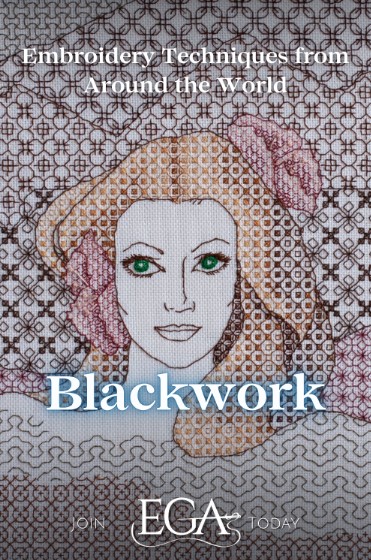
Sources
Blackwork. In Wikipedia. https://en.wikipedia.org/wiki/Blackwork
Royal School of Needlework (n.d.). Holbein Stitch. RSN Stitchbank. Retrieved May 20, 2025, from https://rsnstitchbank.org/stitch/holbein-stitch
(n.d.). Early Medieval (mostly) Textiles #14. Dr Alexandra Makin. Retrieved May 20, 2025, from https://alexandramakin.com/2021/08/01/early-medieval-mostly-textiles-14/
Goodwin, J. (2021). Blackwork Embroidery. The Crowood Press. https://www.crowood.com/products/blackwork-embroidery-by-jen-goodwin
Golding Craft (n.d.). Blackwork Embroidery. Retrieved May 20, 2025, from https://www.goldingcraft.com/blackwork.htm?srsltid=AfmBOoomrLbeT_McrFEPHVGwXTccIjNKo0Vp2EnaXiA0l3xqkpGHNfnG
Textile Research Centre (n.d.). Blackwork. TRC Leidein. Retrieved May 20, 2025, from https://trc-leiden.nl/trc-needles/regional-traditions/europe-and-north-america/embroideries/blackwork
(n.d.). The Timeless Art of Tudor Blackwork Embroidery. The School of the Forgotten Arts. Retrieved May 20, 2025, from https://www.theschooloftheforgottenarts.com/post/tudar-blackwork-embroidery
Panamaroff, A. (n.d.). Blackwork. Edmonton Needlecraft Guild. Retrieved May 20, 2025, from https://www.edmontonneedlecraftguild.org/info/blackwork
Panamaroff, A. (2017, March 13). The Roots of Blackwork Embroidery. The West Kingdom Needleworkers Guild. Retrieved May 20, 2025, from https://www.wkneedle.org/the-roots-of-blackwork-embroidery/
